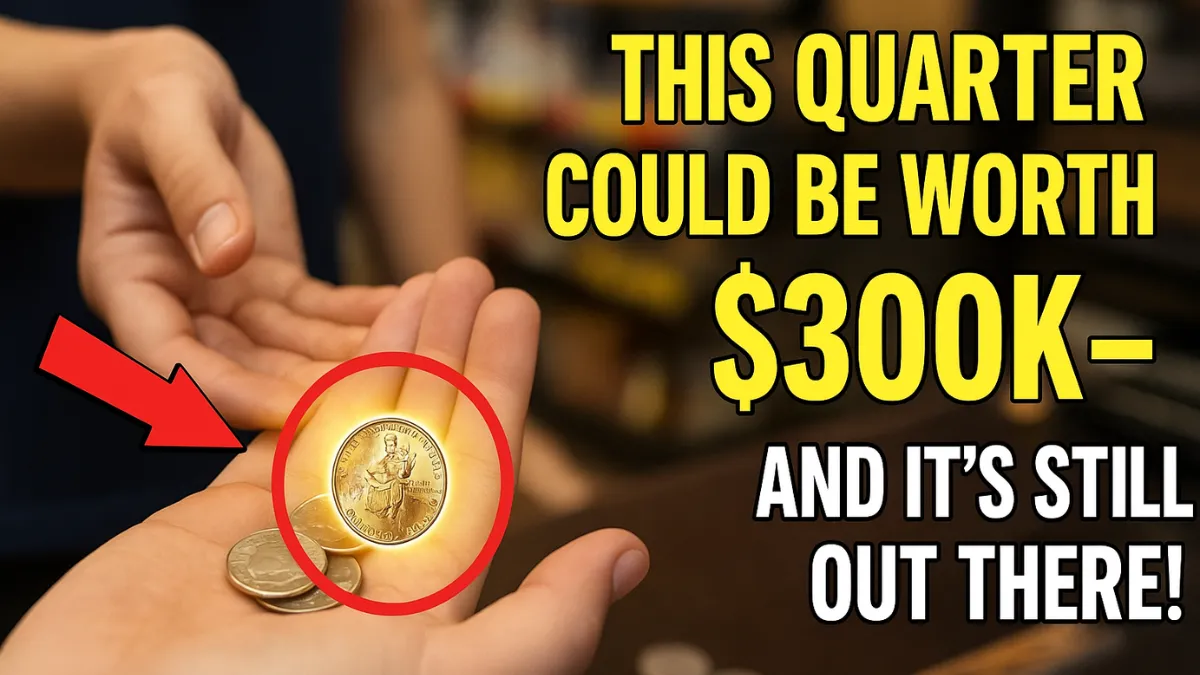In a world where most coins go unnoticed in pockets and piggy banks, one special quarter stands out—not for its age, but for its value. Created to mark 200 years of American independence, the 1976 Bicentennial Quarter features a design like no other and, in some cases, could be worth up to $300,000.
Yes, you read that right. A quarter—just 25 cents—might hold life-changing value if it has the right mix of rarity, condition, and minting errors.
What Makes the 1976 Bicentennial Quarter Special?
Unlike regular quarters, the Bicentennial Quarter has a unique reverse design. Instead of the familiar eagle, it features:
- A Colonial drummer boy
- A lit torch in a circle of 13 stars representing the original colonies
- The dual date “1776–1976” on the obverse, still showing George Washington’s profile
This commemorative design was created to celebrate America’s 200th birthday and remains one of the most iconic U.S. coins ever minted.
Most of these quarters were made from copper-nickel and circulated widely. But some special editions—particularly those struck in 40% silver or with minting errors—are rare and highly sought after.
Why Are Some Bicentennial Quarters Worth Thousands?
While most Bicentennial Quarters are only worth their face value, a select few can sell for thousands or even hundreds of thousands of dollars. Here’s why:
1. Minting Errors
Rare mistakes like:
- Double die errors (design elements appear twice)
- Off-center strikes
- Missing details or die breaks
These errors make coins more valuable because they’re so uncommon.
2. Silver Content
Some Bicentennial Quarters were specially minted in 40% silver, intended only for collectors. These silver versions never entered general circulation and are worth far more than regular quarters—especially in mint condition.
3. Proof and Special Edition Coins
Coins made for collectors are often referred to as proof coins. These are struck using a special minting process that gives them a flawless, glossy finish. If you come across one in perfect condition—especially in silver—it could fetch a hefty price.
4. Combined Traits
The most valuable coins often feature a combination of errors, silver content, and pristine condition. One such Bicentennial Quarter was valued at $300,000 for its extremely rare traits and immaculate preservation.
How to Identify a Rare Bicentennial Quarter
You don’t need expert tools—just a bit of patience and a sharp eye. Here’s what to look for:
- Edge Check: Most quarters have a visible copper stripe along the edge. If your coin appears solid silver, it could be a 40% silver version.
- Mint Mark: Look for an “S” (San Francisco), “D” (Denver), or no mint mark at all. Proof and silver versions usually have an “S.”
- Mint Errors: Check for:
- Double images or letters
- Faded or missing designs
- Off-center printing
- Glossy Finish: A mirror-like surface with no scratches or wear could indicate a proof coin.
- Weight: Silver quarters are slightly heavier. A digital scale can help spot the difference.
Are These Quarters Still Circulating?
Surprisingly, yes! The U.S. Mint produced over 1.6 billion Bicentennial Quarters, and many remain in circulation today. While most are common, a few rare editions still slip through unnoticed.
You might find one:
- In your pocket change
- Inside an old coin jar
- In a grandparent’s collection
- Or tucked in a forgotten coin album
Why Coin Collectors Love the Bicentennial Quarter
The Bicentennial Quarter is a favorite among both casual collectors and seasoned numismatists because it checks every box:
- Patriotic symbolism tied to a historic milestone
- Unique design and dual-date feature
- Multiple rarities, including errors and silver versions
- A chance for hidden value in everyday places
Plus, the hunt itself is exciting. It’s not just about money—it’s about discovering a piece of history.
Final Thoughts
Yes, it’s true—a Bicentennial Quarter once sold for $300,000 due to its flawless condition, silver content, and minting error. While finding one that valuable is rare, millions of these coins are still out there. All it takes is one sharp-eyed collector to spot a treasure hiding in plain sight.
If you have a few old quarters lying around, take a moment to look closer. You might be holding more than just 25 cents—you could be holding a small fortune in your hands.
FAQs
Q1: How can I tell if my Bicentennial Quarter is silver?
Look at the edge—if there’s no copper stripe and it appears solid silver, it could be a 40% silver version. Weighing the coin can also help: silver quarters are slightly heavier.
Q2: What kinds of mint errors should I check for?
Look for doubling of letters or designs, off-center images, missing elements, or odd marks. These flaws can significantly raise a coin’s value.
Q3: Are these quarters still in everyday circulation?
Yes, millions were minted, and many are still used today. That means it’s entirely possible to find one in your spare change or an old coin jar.
Q4: Can a Bicentennial Quarter really be worth $300,000?
Yes, in rare cases. One coin with silver content, a mint error, and pristine proof condition was valued at $300,000.
